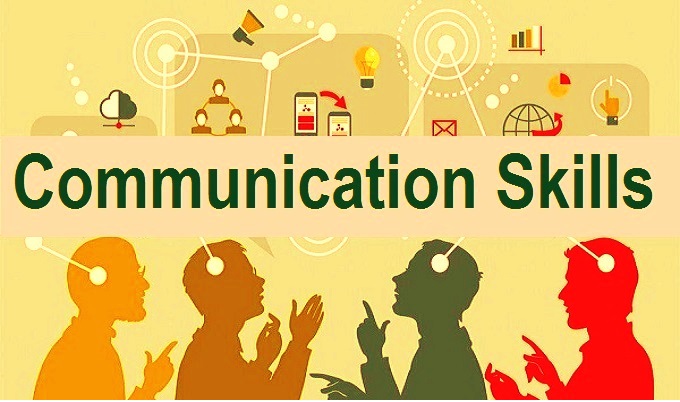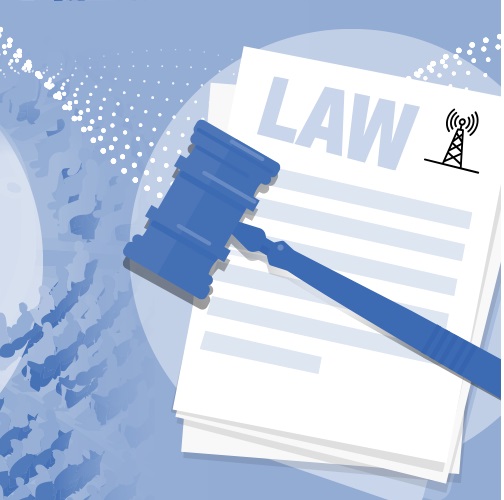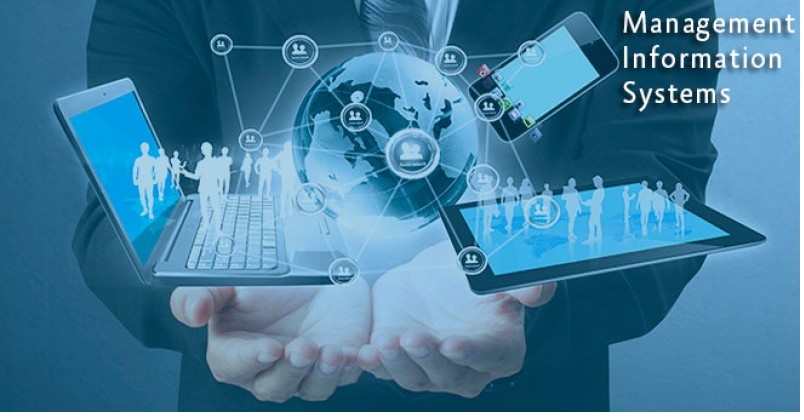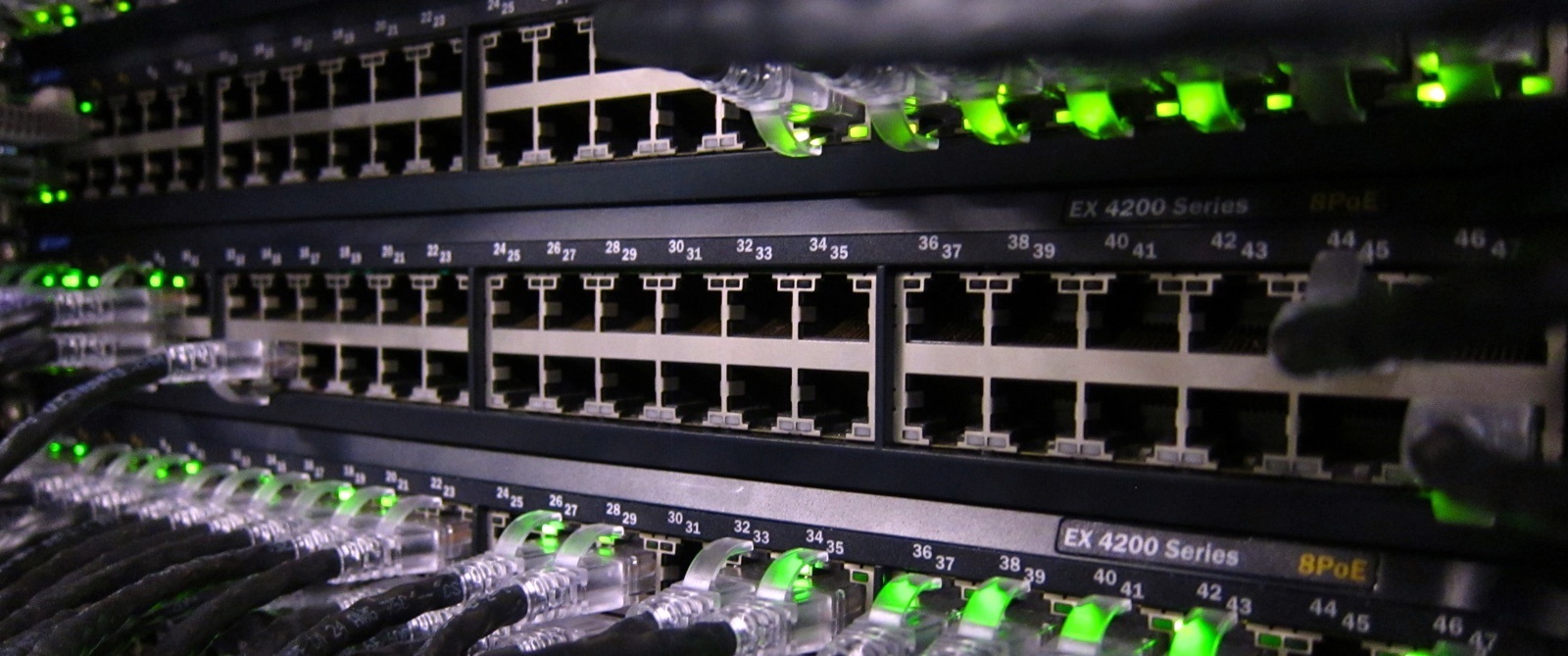Computer literacy describes a level of general knowledge and proficiency one has with computers and related technologies, such as software, hardware, operating systems, and typing skills. While computer literacy usually refers to the ability to run and navigate applications, it may include understanding and writing the code used in computer programming.
Although this proficiency is important, it may not necessarily qualify an individual to work in a specific computer-related field. For instance, highly-specialized jobs like programming databases or developing microprocessors.

- Teacher: Brenda Nakirya
Course Description
This course introduces students to effective communication skills used in business organizations. Effective communication is crucial to management as it facilitates all other managerial and operational functions.
Course Objectives
The course aim is to:
1. Introduce students to the concepts of Communication
2. Equip students with skills in writing and in analytical thinking.
3. Introduce the students to the culture of reading and responding so that people can understand your thoughts through speech and writing..
4. Enable students select the appropriate medium of communication to disseminate information
5. Equip the students with skills on how to design effective messages that will bring the desired change to the targeted audience.
6. Enable students use effectively verbal and written communication.
Learning Outcomes
By the end of the course learners will be able to:
1. Describe the meaning of communication and how it supports other managerial functions.
2. Write business letters, memo reports, CVs and other written documents used in organizations and businesses.
3. Disseminate information using appropriate medium of communication.
4. Demonstrate public presentation skills through speeches and writing.
Detailed Course Content
1. Introduction to Communication (8 hours)
i) Definition of communication.
ii) Communication process and its elements.
iii) Methods of communication.
iv) Communication barriers.
v) Solutions to communication barriers.
vi) Interpersonal skills: team work, office dynamics, etiquette, emotional intelligence, personal interactions, etc
2. Organizational Communication (3 hours)
i) Definition of organizational communication.
ii) Formal and informal communication.
3. Written Communication (6 hours)
i) Definition of written communication.
ii) Tools of written communication.
iii) Merits and demerits of written communication.
iv) Writing letters, CVs, Reports, memo, notice.
v) Similarities and differences of written communication tools (memo, letters and reports).
4. Listening Skills (6 hours)
i) Definition of listening.
ii) Types of listening.
iii) Principles of effective listening.
iv) Reasons for bad listening.
5. Non Verbal Communication ( 3 hours)
i) Definition of verbal communication.
ii) Tool of verbal communication.
iii) Merits and demerits of verbal communication.
6. Public Speaking (4 hours)
i) Definition of public speaking.
ii) Preparation of public speaking.
iii) Methods of speech presentation.
iv) Stage fight & solution to it.
7. Meeting (4 hours)
i) Definition of meetings.
ii) Types of meeting.
iii) Documents used at a meeting.
iv) Preparation for a meeting.
v) Key participants to a meeting and their roles.
8. Interviews (3 hours)
i) Definition of an interview.
ii) Types of interviews.
iii) Preparation of an interview.
9. Reading Skills (4 hours)
i) Critical reading, Interpretations, Making summaries
ii) Indexing, Map reading, Library skills
10. Practical Exercise (4 hours)
i) Interviews.
ii) Letter, memo and report writing.
iii) Oral presentation.
Study Materials
Relevant text books, power point slides, a projector, lap top and teaching aids necessary.
Mode of Delivery
Lectures, class discussions, case studies, class presentations, class demonstrations, independent studies
Mode of assessment
Test 15%
Assignment 15%
End of semester examination 70%
Total 100%
Reading List
1. DeVito, Joseph A. (2000), The Elements of Public Speaking. 7th ed. New York: Addison Wesley Longman, Inc.
2. Frederick, W. (2007).The New Communications, Wadsworth Publishing Company Chicago.
3. Denis, M. (2001), Mass Communication Theory An Introduction, Sage Publications Ltd, London.
4. John, L. (2004), English Skills with Reading (third edition); MCGraw, USA.
5. Himstreet, C. W. etal (2006), Business Communications, Glencoe, California.
6. Hayes, G. C. (2007), English At Hand, Townsend Press,West Berlin, New Jerssy.
7. Komunda, M. (2005), Business Communication Skills, Mukono Bookshop printing and publishing Co Ltd, Kampala Uganda.
8. Wrench, Jason S., Anne Goding, et al. Stand Up, Speak Out: The Practice and Ethics of Public Speaking, v. 1.0. Flat world Knowldege.com, 2012.
9. Saleeemi (1990), Business Communication and Report writing simplified Saleeemi publishers.
10. Joyce G., and Armstrong C. (2001), Writing & grammar, Communication in Action, Prentice Hall United States of America.
11. Jones, E.A. (2014). Essential Skills in writing, speech and listening, and critical thinking for college graduates: Perspectives of faculty, employers, and policymakers. University Park, PA: National Center for Postsecondary Teaching, Learning, and Assessment.
12. Jones, E.A. (Ed.) (2013). New directions for higher education: Vol. 96, Preparing competent college graduates: Setting new and higher expectations for student learning. San Francisco: Jossey-Bass.
13. Quianthy, R.L. (1990). Communication is life: Essential college sophomore speaking and listening competencies. Annandale, VA: National Communication Association.

- Teacher: Emmanuel Eilu
Course Description
Information Technology Policy and Ethics is a crucial course unit that enables students to learn the behaviors and significances of using Computers and IT at large in the modern society. It introduces students with concepts of social and ethical considerations related to IT and organizational policies. Social impacts of IT on human life are also discussed. The course aims to give students a general idea of the impact of advancement in Information Technology on society, Social structures, Ethics, Legal issues relating to computerized systems, and applications of information technology in various aspect of life for national development.
Course Objectives
1. To explain to students the social and ethical significance for the development, implementation and use of information technology to the individuals and societies.
2. To provide students with knowledge of social impacts of information technology on human life
3. To explain students how ethical considerations tend to refer to the responsibility and accountability involved in the design and implementation of IT.
Course Learning Outcomes
By the end of the course unit, the students will be able:
1. To understand the social and ethical significance for the development, implementation and use of information technology to the individuals and societies.
2. To show understanding of the knowledge of social impacts of information technology on human life
3. To show understanding of the ethical considerations involved in the design and implementation of IT.
Indicative Content
1. Information Technology (IT) and its resources, (10 Hours)
IT related Institutional Policies and their Conformance with State Policies.
2. Classification of policy statements: (10 Hours)
i) corporate policy and information security policy,
ii) Classification of Information,
iii) Public / non classified information,
iv) Personal security policy,
v) Password policy,
vi) Computer & Network policy,
vii) Business Continuity Planning Reviewing the impact of computerized systems in our society;
3. Social structures, their boundaries and development; (10 Hours)
i) Ethical issues (Basic honesty, sincerity, etc.) relating to system development and its use;
ii) Systems security and protection;
iii) Dependency constraints,
iv) self-reliance;
4. Legal issues relating to computerized systems; (10 Hours)
i) an overview of laws that applies to IT and deals with cybercrimes such as pornography,
ii) harassment, fraud, hacking, and invasion of privacy,
iii) disclosure of organizational private electronic records.
iv) Other related criminal activities.
5. Intellectual Property: (10 Hours)
i) Subject matter protected by IP,
ii) Reasons for protecting IP,
iii) Common types of IP,
iv) Works protected by copy right,
v) Rights protected.
vi) Objectives of IP,
vii) Financial incentives,
viii) Technology diffusion,
ix) Economic growth Rights of public performance, broadcasting and public availability, right of broadcast, translation & adoption rights, moral rights, fair use rights
6. Concepts of digital Millennium copyright act, (10 Hours)
i) industry effort, damage due to hacking, phishing, viruses protection from hacking, & Viruses.
ii) Uses and applications of computers for national development, communication, agriculture, health care delivery, banking, administration, accounting, planning and decision making will also be covered.
Study Materials
Relevant text books, power point slides, a projector, lap top and teaching aids necessary.
Mode of Delivery
Lectures, Tutorials, Lab sessions
Mode of Assessment:
Test 15%
Assignment 15%
End of semester examination 70%
Total 100%
Reading List
1. William A. O, Kenneth W. D & Herbert S. L, Technology, Policy, Law and Ethics regarding U.S. Acquisition and use of cyber-attack capabilities, Committee on offensive Information Warfare, National Research Council.
2. Soraj,. H & Charles,. E; Information Technology Ethics: Cultural Perspectives
3. Kizza J., (2003). Ethical and Social Issues in the Information Age. 2ND Edition, Springer.

- Teacher: Emmanuel Eilu
Course Description
This course unit prepares students to have the clear fundamental picture of what an Information system is, help them depict the difference between data management, information management, systems management/analysis and the role of personnel in an information system department of an organisation. Topics of types of information systems used in organisations, issues of systems integration, project management, essentials in networks and data communication, the management of technological change, electronic commerce, how information systems are used for strategic advantage are also covered.
Course Objectives
1. Acquire basic knowledge of how information systems are built, be introduced to concepts of process modelling, data modelling/management and IT project management.
2. To provide students with a management-level understanding of the contributions and or strategies or otherwise that Information Technology can make to organisations and other business arena
3. To provide students with a basic understanding of the information systems development process and the roles of IT personnel (such as systems analysts, designers, systems administrators and programmers) in this process, so that they may better interact with these personnel in a management context.
4. To provide students with introductory level studies in various computer software/hardware, internet resources and other data communication skills so that at the end, they will have the feel of the emerging IT innovations
Course Learning Outcomes
By the end of this course, the student will be able to:
1. Demonstrate understanding of how information systems are built, the concepts of process modelling, data modelling/management and IT project management.
2. Demonstrate understanding of the contributions and strategies or otherwise that Information Technology can make to organisations and other business arena
3. Demonstrate understanding of the information systems development process and the roles of IT personnel (such as systems analysts, designers, systems administrators and programmers) in this process, so that they may better interact with these personnel in a management context.
4. Should be able to practically use the various computer software/hardware, internet resources and other data communication skills so that at the end, they will have the feel of the emerging IT innovations
Indicative Content
|
1. Definition of basic terms (8 Hours) i) computer, data, information, computer systems, information systems, ii) internet & data communication related terms and Complete introduction to the fundamental concepts of information systems and the way they are applied in today’s business world. |
|
2. Components and concept of management information system in information system, (4 Hours) i) The nature and scope of MIS, ii) characteristics, functions and quality of information, iii) Computer system devices: |
|
3. Detailing the information processing life cycle by looking at Data collection devices, data input devices, processing devices, output devices, storage devices. (8 Hours) |
|
4. Understanding the information System: (8 Hours) i) The equipment and the software, ii) the different personnel in an information system department, iii) the information system department management, iv) Management Triangles, The information management triangle, systems management Triangle & the general IT grouping Triangle |
|
5. Types of Information Systems: (8 Hours) i) Decision support system in details, ii) understanding Simon’s model of decision making, iii) the concept of system development lifecycle, iv) database management system, v) types of data bases and the its environment. |
|
6. Information grading in an organization: (8 Hours) i) Levels of information, ii) Categories of information & Qualities of information in an organisation, iii) General Management of data in an organisation, iv) Data attributes including availability & integrity, v) data security, data maintenance including updating |
|
7. The Internet & today’s data communication technologies: (8 Hours) i) LAN, WAN, Internet, ii) LAN topologies, iii) the fundamentals of wireless networks and their standards egg. iv) Wi-Fi, the contributions of private/public Networks to e-commerce (B2B, B2C,C2C) |
|
8. The latest business trends from enterprise systems and make-or-buy decisions to global-e-commerce and data mining. (8 Hours) |
Study Materials
Relevant text books, power point slides, a projector, lap top and teaching aids necessary.
Mode of Delivery
Lectures, Tutorials, Lab sessions
Mode of Assessment:
Test 15%
Assignment 15%
End of semester examination 70%
Total 100%
Recommended Books
1. Stephen,. H, Maeve,. C & Donald J. M, (2005). Management Information Systems for the Information Age, 5th Edition, McGraw-Hill Publishers New York
2. L.M. Applegate, R.D. Austin & F.W. McFarlan. (2007). Corporate Information Strategy and Management: Text and Cases , 7th Edition, McGraw Hill.
3. P. Bocij, A. Greasley & S. Hickie, (2008). Business Information Systems: Technology, Development and Management for the E-Business, 4th Edition. Prentice Hall.
4. Kenneth C. L & Jane P. L, (1996). Management Information Systems, Fourth Edition, Prentice Hall.

- Teacher: Emmanuel Eilu
Course Description
This Course Unit provides introduction to tools, skills, and understanding of technology, business concepts and issues surrounding electronic commerce. The topics of security-authentication, Privacy encryption, safeguarding of intellectual property rights, and other related topics are also discussed. Using a managerial perspective, this Course Unit focuses on key issues related to e-commerce including strategy development, competitive advantage, current and emerging technologies, pricing, distribution channels, promotion, and advertising.
Course Objectives
The aim of the course is;
1. To explain to students the roles of people, infrastructure, business processes and technologies to develop successful electronic commerce applications.
2. To provide students with knowledge and skills required in forecasting developments in electronic commerce and how electronic commerce technologies will affect those areas of business they are targeting for their future careers.
3. To provide students with the skills required for them to work on projects jointly.
4. To provide students with the knowledge and skills required to identify a firm’s business model, scope and revenue streams and be able to evaluate its strategy-based upon its position in a competitive space and the macro environment factors that influence it
Course Learning Outcomes
Upon completion of this course, students will be able;
1. Explain the roles of people, infrastructure, business processes and technologies to develop successful electronic commerce applications.
2. Interpret in forecasting developments in electronic commerce and how electronic commerce technologies will affect those areas of business they are targeting for their future careers.
3. Work to together on joint projects
4. Identify a firm’s business model, scope and revenue streams and be able to evaluate its strategy-based upon its position in a competitive space and the macro environment factors that influence it
Indicative Content
|
1. Overview of e-commerce: (8 Hours) i) definition, ii) advantages and disadvantages, iii) features, iv) categories; |
|
2. History of the Internet; (8 Hours) i) Planning for a Web Presence; ii) Designing an E-Commerce Presence; iii) Intellectual Property; iv) acceptable use, |
|
3. Definition, types and roles of Corporate Portals. (8 Hours) i) Models of E-Business; ii) Data Privacy and Security. |
|
4. E-Supply Chain: (8 Hours) i) Definition, ii) Features and Components; iii) Problems, RFID Supply Chain Applications. iv) Properties of cash, checks and credit cards; v) Internet-based payment System |
|
5. Models; (8 Hours) i) Electronic payment systems: ii) Smart cards, e-checking, e-billing, Order fulfillment phase. iii) Product and customer-based marketing strategies; |
|
6. Market segments and E Business Models; (8 Hours) i) Web promotion, ii) Strategic Planning Process; iii) Purpose and Content of Business Plan; |
|
7. E-Commerce Impact on Strategic Planning; (8 Hours) i) Formulation, ii) Justification iii) Prioritization of E-Commerce Application, |
|
8. Legal, Ethical and Compliance Issues, (4 Hours) i) the future of Business, ii) Growth, iii) Opportunities, iv) Challenges. |
Study Materials
Relevant text books, power point slides, a projector, lap top and teaching aids necessary.
Mode of Delivery
Lectures, Tutorials, Seminars.
Mode of Assessment:
Test 15%
Assignment 15%
End of semester examination 70%
Total 100%
Reading List:
1. Turban, E. et al. (2004) Electronic Commerce 2004: a Managerial Perspective Upper Saddle River, NJ; Pearson Prentice Hall, ISBN 0130094935.
2. Rayport, J.F. & Jaworski, G.J. (2002) Introduction to E-Commerce, McGraw-Hill, ISBN 0072510242.
3. Paul Richard May, The Business of E-Commerce: from Corporate Strategy to technology breakthroughs in application development.
4. Seybold, P. B. & Ronni T. M., (1998) "Customers.Com", Times Business Random House, New York.

- Teacher: Emmanuel Eilu
Course Description
This is a Basic University Course Unit compulsory for all Kampala University students. It imparts basic computer concepts and knowledge to the students which they need in their day-to-day life in this information age. This Course Unit is designed to impart basic computer knowledge which has become an essential commodity in the current society to the students irrespective of the Course being undertaken. It is also designed to help the University attain its vision of producing all-round graduates.

- Teacher: Emmanuel Eilu



